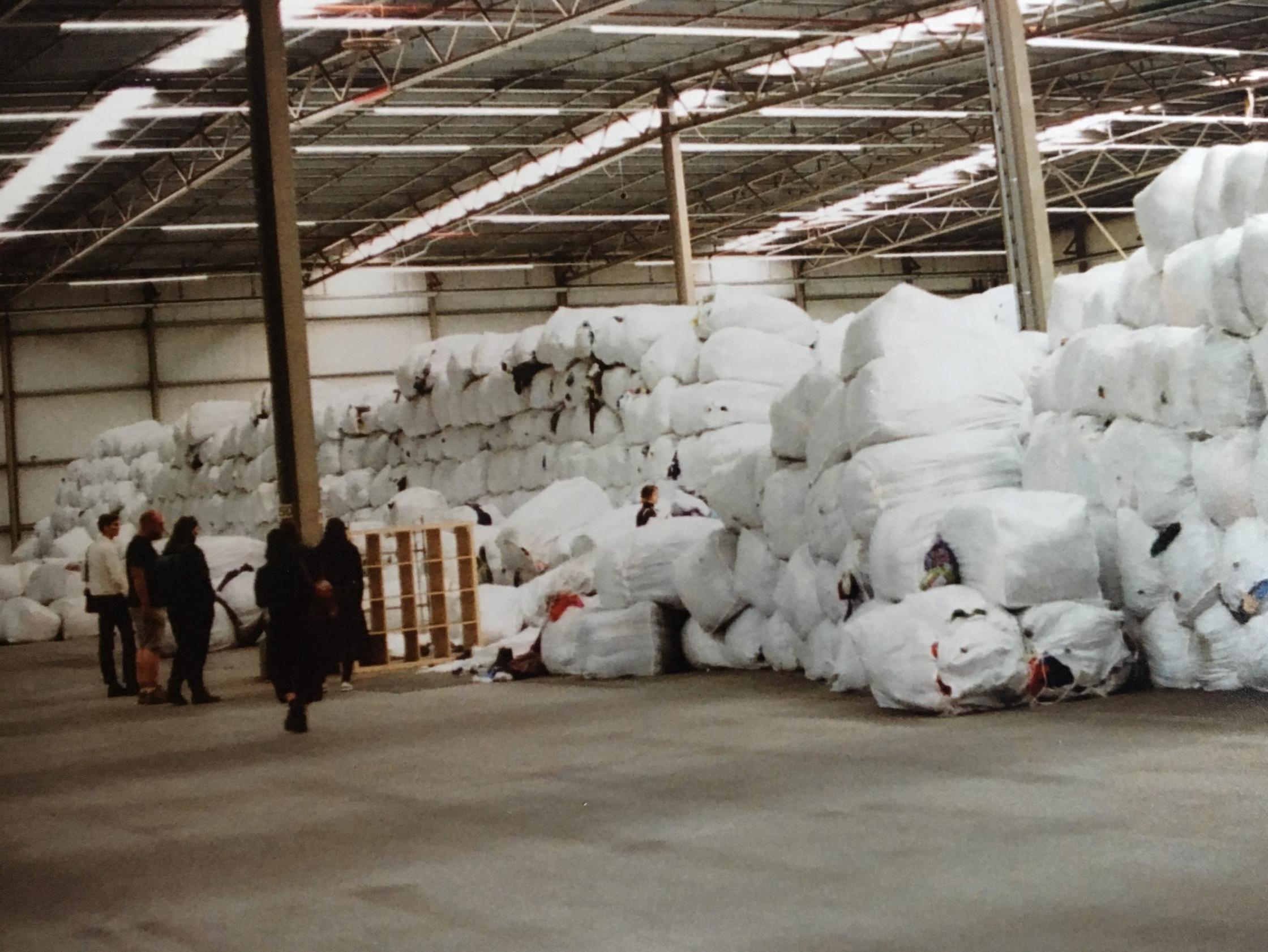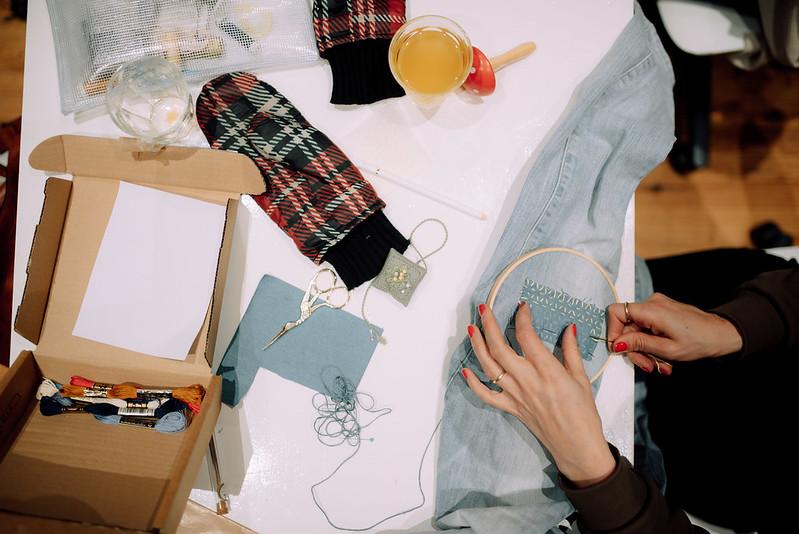Amsterdam Reflow rethinks the lifecycle of textiles with citizens and stakeholders. The Amsterdam Reflow Booklet addresses the environmental impact of the textile industry through a grassroots initiative focusing on discarded consumer textile. This web page will be updated regularly with new chapters of the booklet.
Amsterdam Reflow Booklet
The chapters of the booklet are based on the circular textile flow, as depicted in the wheel chart below. Starting with chapter 1 about discarding textiles, new chapters of the booklet will be published on this page regularly.

Read full booklet in pdf
List of content (updated weekly)
Chapter 1: Discarding Textiles
Chapter 2: Collecting Discarded Textiles
Chapter 3: Sorting Textile Waste
Chapter 4: Sorting for Recycling
Chapter 5: Cutting and Cleaning
Chapter 6: Shredding for Recycling
Chapter 7: Chemical Recycling
Chapter 8: Mechanical Recycling
Chapter 9: Recycling by Extrusion
Chapter 10: Spinning Recycled Yarn
Chapter 11: Making & Finishing Textiles
Chapter 12: Intro to Sustainable Design
Chapter 13: Intro to Textile Production
Chapter 14: Retail Consumers & End-users
Chapter 15: Recognising Circular Textiles
Chapter 16: Textile Use & Care
Chapter 1: Discarding Textiles
Written by Ger Brinks & Anton Luiken. Edited by Laurie Skelton.
1st of January 2021
The textile industry has a high environmental impact, whether it is through the production of the fibres, the processes of making a fabric or textile product, or the use of the final product (e.g. washing, drying, or ironing). In the context of global climate change, it is more important than ever to ensure that the amount of energy we put into the textile industry is not wasted. A simple way to conserve energy in the industry cycle is to use one’s textile products for as long as possible. Of course, there may also be times where you no longer want to keep the product. In cases like these, you have several options for prolonging the use of the product (and the materials from which it’s made) to reduce the environmental impact. Here are a few easy ways to extend the life of your textiles (while also helping people and the planet).
Chapter 2: Collecting Discarded Textiles
Written by Ger Brinks & Anton Luiken. Edited by Laurie Skelton.
1st of January 2021
Chapter 3: Sorting Textile Waste
Written by Ger Brinks & Anton Luiken. Edited by Laurie Skelton.
1st of January 2021
Chapter 4: Sorting for Materials Recycling
Written by Ger Brinks & Anton Luiken. Edited by Laurie Skelton.
1st of January 2021
Chapter 5: Cutting and Cleaning
Written by Ger Brinks & Anton Luiken. Edited by Laurie Skelton.
1st of January 2021
Chapter 6: Shredding for Recycling
Written by Ger Brinks & Anton Luiken. Edited by Laurie Skelton.
1st of January 2021
Chapter 7: Chemical Recycling
Written by Ger Brinks & Anton Luiken. Edited by Laurie Skelton.
1st of January 2021
Chapter 8: Mechanical Recycling
Written by Ger Brinks & Anton Luiken. Edited by Laurie Skelton.
1st of January 2021
Chapter 9: Recycling by Extrusion
Written by Ger Brinks & Anton Luiken. Edited by Laurie Skelton.
1st of January 2021
Chapter 10: Spinning Recycled Yarn
Written by Ger Brinks & Anton Luiken. Edited by Laurie Skelton.
1st of January 2021
Chapter 11: Making & Finishing Textiles
Written by Ger Brinks & Anton Luiken. Edited by Laurie Skelton.
1st of January 2021
Chapter 12: Intro to Sustainable Design
Written by Ger Brinks & Anton Luiken. Edited by Laurie Skelton.
1st of January 2021
Chapter 13: Intro to Textile Production
Written by Ger Brinks & Anton Luiken. Edited by Laurie Skelton.
1st of January 2021
Chapter 14: Retail Consumers & End-users
Written by Ger Brinks & Anton Luiken. Edited by Laurie Skelton.
1st of January 2021
Chapter 15: Recognising Circular Textiles
Written by Ger Brinks & Anton Luiken. Edited by Laurie Skelton.
1st of January 2021
Chapter 16: Textile Use & Care
Written by Ger Brinks & Anton Luiken. Edited by Laurie Skelton.
1st of January 2021
About Amsterdam Reflow Booklet
There is no denying that the environmental impact of the textile industry is enormous. From the pesticides and fertilisers used in cotton production to the fossil fuels used in fabric manufacturing, the textile industry’s current practices have dire consequences for our planet and our health. With the looming threat of climate change, we need to rethink the way we create and consume textiles more than ever.
The Amsterdam Reflow Pilot aims to address some of these issues through a grassroots initiative focusing on discarded consumer textiles. Each year, over 11,000 tonnes of textiles are improperly discarded and end up in landfills or incinerators, while only 2,500 tonnes end up in recycling facilities. By empowering Amsterdam citizens with new knowledge and skills, the pilot programme aims to improve the way textiles are discarded, reused, and brought back into the material flow.
The purpose of this publication is to assemble knowledge and educate stakeholders at every stage of the textile industry’s cycle. Firstly, we aim to extend the life of textiles currently in use through encouraging people to reduce consumption and repair or reuse items. Secondly, when items must be discarded, we want to encourage people to do so correctly and responsibly. Finally, we want to educate and encourage citizens, designers, retailers, and manufacturers to think sustainably when creating or buying new products.
To enact real change and move towards a circular economy and a circular textile industry, we cannot act alone. We hope the knowledge collected here encourages and empowers you to do your part in moving towards a more sustainable world.
Reference
Reflow #2: Garen spinnen uit oude kleren (Pakhuis de Zwijger)

